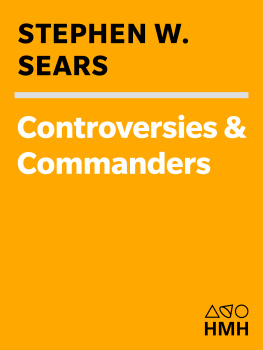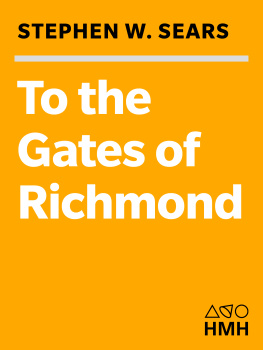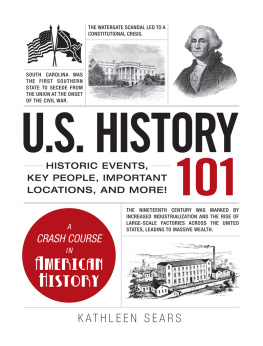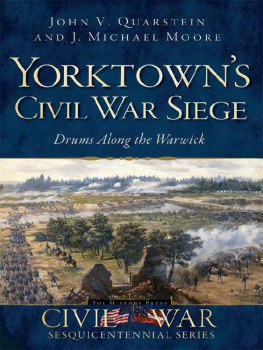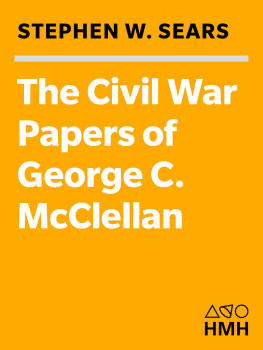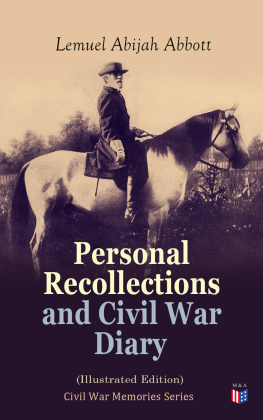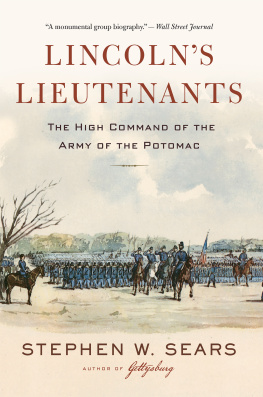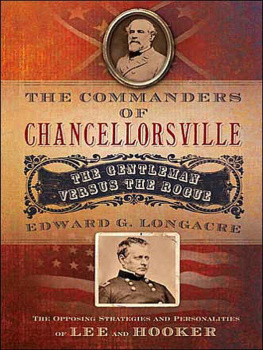Copyright 1999 by Stephen W. Sears
All rights reserved
For information about permission to reproduce selections from this book, write to Permissions, Houghton Mifflin Company, 215 Park Avenue South, New York, New York 10003.
www.hmhco.com
The Library of Congress has cataloged the print edition as follows:
Sears, Stephen W.
Controversies and commanders : dispatches from the Army of
the Potomac / Stephen W. Sean,
p. cm.
Includes index.
ISBN : 978-0-618-05706-1
1. United StatesHistoryCivil War, 18611865Anecdotes. 2. United States. Army of the PotomacAnecdotes. 3. United StatesHistoryCivil War, 18611865Biography. 4. United States. Army of the PotomacBiography. I. United States.
Army of the Potomac. II. Title.
E 468.9. S 43 1999
973 7'3dc21 98-37736 CIP
The Stone, Porter, and Lost Order essays originally appeared, in somewhat different form, in MHQ: The Quarterly Journal of Military History.
PICTURE CREDITS
National Archives: Stone, Porter, Stanton, Hooker, Dahlgren, Kilpatrick. Library of Congress: General and Mrs. McClellan, Lincoln and McClellan, Sickles, Warren. U.S. Army Military History Institute: Smith and Franklin.
e ISBN 978-0-544-39123-9
v1.1014
For Sally, as always
Preface
T HE HIGH COMMAND of the Army of the Potomac was a changeable and frequently disjointed collection of men. It was a rare moment indeed when the generals of the Unions principal army marched in step, or even in the same direction. A number of them all too often appeared to be fighting against rather than for the administration in Washington that employed them. Every Civil War army had its share of controversies, to be sure, but the Potomac armys controversies were unique. This book examines ten incidents of war as waged by the Army of the Potomac in which controversy and commanders were spoken in the same breath.
Three of these essays were originally written for MHQ: The Quarterly Journal of Military History; they have been recast here as necessary to fit my present purposes. The remaining seven were written especially for this book. The selection of subject matter is of course subjective. These incidents, and these commanders, seemed to me worthy of more investigation than they have had previously. My findings, it will be noted, do not always align with conventional wisdom.
It is entirely fitting to begin a Civil War work titled Controversies & Commanders with something on General McClellan. Certainly no Northern commander in that war was regarded, in his own time, as more controversial. Because of my close connection with McClellanas his biographer, as editor of his papers, as a chronicler of his two major campaignsI have as a matter of course evaluated what historians have written about the general over the last century or so. This opening essay offers the fruits of that evaluation.
For much of this century, it seems that in appraising McClellan his biographers took one path while general historians of the war took another. Never the twain did meet. General McClellan was, to the former, simply the shield of the Union. To the latter he was simply (as Kenneth P. Williams famously put it) an attractive but vain and unstable man, with considerable military knowledge, who sat a horse well and wanted to be President. Surely there is a truth to be found somewhere between these extremes. I suggest here that whatever misunderstandings may still exist regarding the general and his place in Civil War history, they may be resolved by studying individually the varied roles he played. The primary need for todays historian, I would argue, is to understand that when he stepped on a battlefield George McClellan became a totally different personnot a real warrior general after all (and therefore probably like most of the rest of us).
In sharp contrast to General McClellan, there has never been any debate over what Civil War historians without exception agree was the ordeal of General Stone. The military establishments treatment of Charles P. Stone was by any measure a disgrace. A divisional commander under McClellan in the Army of the Potomac, Stone became, according to T. Harry Williams, the innocent principal of the American Dreyfus case. Accused of disloyalty and treason, General Stone was confined in military prison (without any actual charge) for more than six months. Considering the fact that this was a full-fledged civil war, in a nation riven by divided loyalties, it is in fact surprising that the Stone case was the only one of its kind. But in a land of liberty one such case was enough.
That Charles Stone was the victim of an out-of-control congressional investigative committee, a cynically vindictive secretary of war, and a faint-hearted army command is well known. But it has not previously been known that the trigger that sent General Stone to grim Fort Lafayette was pulled by a conspiratorial band of plotters from his own command. The whole business, said a wartime editor, formed the worst blot of its kind on the Union cause.
The Stone case is followed here by an accounting of an even more famous instance of military justice (or injustice), the court-martial of Major General Fitz John Porter. Like Stone, Porter was the victim of a secret agenda concocted by his accusers. In his court-martial that opened in December 1862, Porter was charged with eight counts of disobedience of orders and misbehavior before the enemy during the Battle of Second Bull Run. From deep in the shadows, however, came the hidden accusation that Fitz John Porter was the visible representation of what was then being called McClellanism, a disease defined by detractors of that deposed general as bad blood and paralysis infecting much of the Army of the Potomacs officer corps. How this accusation influenced the selection of the officers sitting in judgment of Porter, and how it influenced their decision in the case, is examined here in detail. Also traced is the tortuous postwar path of the Porter case. While General Porters cashiering may have been an injustice, at the time it may be said that a certain rough justice was also rendered, to the ultimate benefit of the Army of the Potomac.
September Crisis presents a cautionary tale: How General McClellan got his army back when no oneabsolutely no onein the War Department or in the administration wanted that to happen. It marks the strangest episode in the command history of the Army of the Potomac. Secretary of War Edwin M. Stanton had vowed McClellan must go, and he was willing to break up the administration over the issue. Just how far Stanton and his Cabinet allies managed to go with their remonstrance, and the searing effect of their efforts on Mr. Lincoln, receives a new telling here.
With his genius for getting to the nub of the issue, Lincoln recognized that after the Second Bull Run debacle the army might very well not fight again for anyone other than McClellan. Thus the president, very much against his better judgment, returned the army to General McClellan. What ensued was Little Macs finest hour. Here was not McClellan the deeply flawed warrior general but McClellan the highly expert executive general; this was what he did best. He pulled together and patched together a single army out of a rabble of separate armies and independent commands, rebuilt its command system, and reinvigorated its morale. Then he set it on the road that led to Antietam Creek.
The next essay, when it appeared in MHQ, bore the overly optimistic title The Last Word on the Lost Order. Here it is retitled Last Words on the Lost Order, and I limit the implied finality to merely my last words on the subject. If history is any guide, no doubt there are others with last words yet to be written on this subject.
Next page
